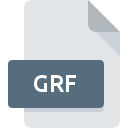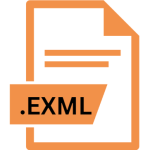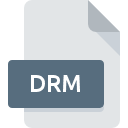.GRF File Extension

Ragnarok Client Archive
| Developer | Gravity |
| Popularity | |
| Category | Game Files |
| Format | .GRF |
| Cross Platform | Update Soon |
What is an GRF file?
The .GRF file extension is primarily associated with graphics and gaming applications. It is often used to store graphics resources, textures, sprites, and other visual elements utilized in various video games and software applications.
While .GRF files are not as widely recognized as some other file extensions, they hold significant importance in the gaming and graphic design industries.
More Information.
.GRF file format was specifically created to streamline the storage and retrieval of game assets in Ragnarok Online.
This file extension was chosen as an abbreviation for “Gravity Ragnarok File,” paying homage to the game’s developer, Gravity Co., Ltd.
The primary purpose of .GRF files were to improve the efficiency of asset management, reducing loading times and optimizing gameplay.
The use of .GRF files expanded beyond Ragnarok Online, as other game developers recognized their utility.
Various gaming companies and graphic design software developers started adopting the .GRF format to store and manage their graphics resources. This extension became synonymous with efficient graphics storage and retrieval in the gaming industry.
Origin Of This File.
The origin of the .GRF file extension can be traced back to the world of video gaming. It is closely associated with the game “Ragnarok Online,” a popular massively multiplayer online role-playing game (MMORPG) developed by South Korean company Gravity Co., Ltd.
The game made extensive use of .GRF files to store game assets such as character sprites, maps, and audio files.
File Structure Technical Specification.
To understand .GRF files better, it’s essential to explore their structure and technical specifications. A typical .GRF file consists of the following components:
- Header: This section contains metadata about the .GRF files, such as its version, encryption settings, and other essential information.
- File Table: The file table is a critical part of the .GRF file, as it maintains an index of all the files stored within it. Each entry in the table includes information like the file’s name, size, and location the .GRF file.
- File Data: This section contains the actual data of the files, which could be textures, sprites, audio files, or any other graphical or multimedia resources.
- Encryption (Optional): Some .GRF files may employ encryption to protect their contents from unauthorized access or modification. This encryption can vary in complexity and strength.
How to Convert the File?
Converting .GRF files can be necessary when you need to extract, modify, or utilize the contents of these specialized files in different applications or environments.
The conversion process typically involves extracting the contents of the .GRF file and then converting individual assets as needed.
Here’s how to do it:
Method 1: Extract and Rebuild
- Download a .GRF Editor: To work with .GRF files, you’ll need a specialized editor such as GRF Editor or GRF Factory. You can find these tools available for download online.
- Open the .GRF File: Launch the .GRF editor and open the .GRF file you want to convert.
- Extract Contents: Use the editor’s extraction feature to extract the contents of the .GRF file to a folder on your computer. This will give you access to the individual assets stored within the .GRF file.
- Modify or Convert Assets: Depending on your requirements, you can now modify or convert individual assets using appropriate software. For example, you can use image editing software like Photoshop to edit image files.
- Rebuild .GRF File: After making the necessary changes, use the .GRF editor to rebuild the .GRF file with the modified assets. Make sure to follow the editor’s instructions for this process.
- Save the Converted .GRF File: Once the file is rebuilt, save it with a new name or in a different location to distinguish it from the original .GRF file.
Method 2: Convert Individual Assets
Sometimes, you may only need specific assets from a .GRF file rather than the entire contents. In this case, you can extract individual assets and convert them as needed:
- Open .GRF File: Use a .GRF editor to open the .GRF file.
- Browse Contents: Navigate through the .GRF file’s contents using the editor’s file table to locate the specific asset you want to convert.
- Extract the Asset: Select the asset and extract it to your computer. This will save the asset as a separate file, preserving its original format.
- Convert the Asset: If the asset requires conversion (e.g., from a proprietary format to a common image format), use appropriate software to perform the conversion. Graphic design software like Adobe Photoshop or GIMP is handy for image-related conversions.
- Save the Converted Asset: After conversion, save the asset with the desired file format and location on your computer.
Advantages And Disadvantages.
Advantages:
- Efficient Resource Management: .GRF files are designed to optimize the storage and retrieval of graphical resources, reducing load times and enhancing the overall gaming experience.
- Organized Data: The file table within .GRF files allow for organized storage of resources, making it easier for developers to locate and access specific assets.
- Customization: Game developers and graphic designers can tailor .GRF files to suit their specific needs, including encryption for asset protection.
Disadvantages:
- Limited Compatibility: .GRF files are not as widely supported as more common file formats, which can pose challenges when working with them outside of specific gaming environments.
- Encryption Complications: Encrypted .GRF files may be challenging to modify or extract without the proper decryption tools, which could hinder modding or customization efforts.
- Not Well-Known: Due to their niche usage, .GRF files may not be well-known to the average computer user, leading to confusion when encountering them.
How to Open GRF?
Open In Windows
- Using .GRF Editors: Windows users can easily open .GRF files by downloading and installing dedicated .GRF editors such as GRF Editor or GRF Factory. These tools provide a user-friendly interface to view, extract, and edit .GRF files.
- Running Compatibility Mode: If you encounter compatibility issues with .GRF editing software, you can try running it in compatibility mode or with administrator privileges to ensure proper functionality.
Open In Linux
Wine and .GRF Editors: Linux users can follow a similar approach to macOS. Install Wine on your Linux distribution, then use it to run Windows-based .GRF editors.
Open In MAC
- Wine and .GRF Editors: Since many .GRF editors are designed for Windows, macOS users can use Wine, a compatibility layer, to run Windows applications. Install Wine, then install and run a Windows-based .GRF editor like GRF Editor using Wine.
Open In Android
Open In IOS
Open in Others
- Specialized Software: Keep in mind that working with .GRF files often requires specialized software, and not all operating systems have native support for these files. Using dedicated .GRF editors or Wine may be necessary.
- File Association: To streamline the process, you can associate the .GRF file extension with your chosen .GRF editor, allowing you to open .GRF files with a simple double-click.













